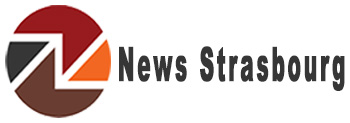In the dynamic landscape of contemporary workplaces, conference tables have emerged as focal points for collaboration, decision-making, and fostering a sense of community among professionals. Gone are the days of mundane boardroom setups; today’s conference table are designed not only for functionality but also to enhance the overall work experience. This article explores the evolution and importance of conference tables in modern workspaces, examining how they have evolved from traditional meeting spaces to dynamic hubs that promote creativity, communication, and productivity.
Historical Perspective:
The concept of a dedicated space for meetings and discussions dates back centuries, with the evolution of conference tables mirroring the changes in work culture and technology. In the early 20th century, boardrooms were characterized by large, imposing tables, often made of heavy wood, symbolizing authority and formality. Meetings were typically hierarchical, and the design of conference tables reflected this rigid structure.
Shift to Collaboration:
As workplaces evolved and embraced a more collaborative approach, the design and functionality of conference tables transformed. The shift from closed-door boardrooms to open, collaborative spaces led to the advent of modular and flexible conference tables. These tables were designed to be reconfigurable, allowing for different layouts to accommodate various meeting formats and team sizes.
Technological Integration:
The rapid advancement of technology in the 21st century has significantly impacted the design and functionality of conference tables. Today, conference tables are equipped with integrated audio-visual systems, connectivity ports, and wireless charging capabilities. This seamless integration of technology enhances communication during meetings, allowing for smoother presentations and efficient collaboration, irrespective of physical location.
Ergonomics and Comfort:
Recognizing the importance of employee well-being, modern conference table design with a focus on ergonomics and comfort. Adjustable height options, ergonomic seating, and cable management systems contribute to a comfortable and productive meeting environment. The emphasis on ergonomics not only enhances the overall experience but also promotes long-term health benefits for employees.
Versatility in Design:
One notable trend in contemporary conference tables is the emphasis on versatile and aesthetically pleasing designs. Companies now recognize the value of creating visually appealing workspaces that reflect their brand identity. Conference tables come in a variety of shapes, sizes, and materials, allowing organizations to choose designs that align with their corporate culture and values.
Flexible Work Environments:
The rise of remote and flexible work arrangements has further influenced the design of conference tables. Organizations are now investing in solutions that support hybrid work models, with conference tables serving as central hubs for both in-person and virtual meetings. Integration with video conferencing technology ensures seamless communication between on-site and remote team members, fostering inclusivity and collaboration.
Customization and Personalization:
To create unique and inspiring workspaces, many companies are turning to customizable and personalized conference tables. From choosing materials and finishes to incorporating brand colors and logos, organizations have the flexibility to tailor conference tables to align with their specific design preferences. This customization not only enhances the aesthetic appeal but also reinforces the brand identity within the workspace.
Promoting Collaboration and Innovation:
Beyond their physical attributes, conference tables play a crucial role in fostering collaboration and innovation within organizations. The layout and design of these table influence the dynamics of meetings, encouraging open communication and idea-sharing. Collaborative features such as writable surfaces, integrated whiteboards, and multifunctional accessories further contribute to a conducive environment for brainstorming and problem-solving.
Conclusion:
In conclusion, conference tables have evolved from traditional meeting spaces to dynamic hubs that reflect the changing nature of work. The integration of technology, emphasis on ergonomics, versatility in design, and the ability to support flexible work environments have elevated the role of conference tables in modern workspaces. As organizations continue to prioritize collaboration, communication, and employee well-being, the conference table remains a symbol of the evolving and adaptive nature of contemporary workplaces.

